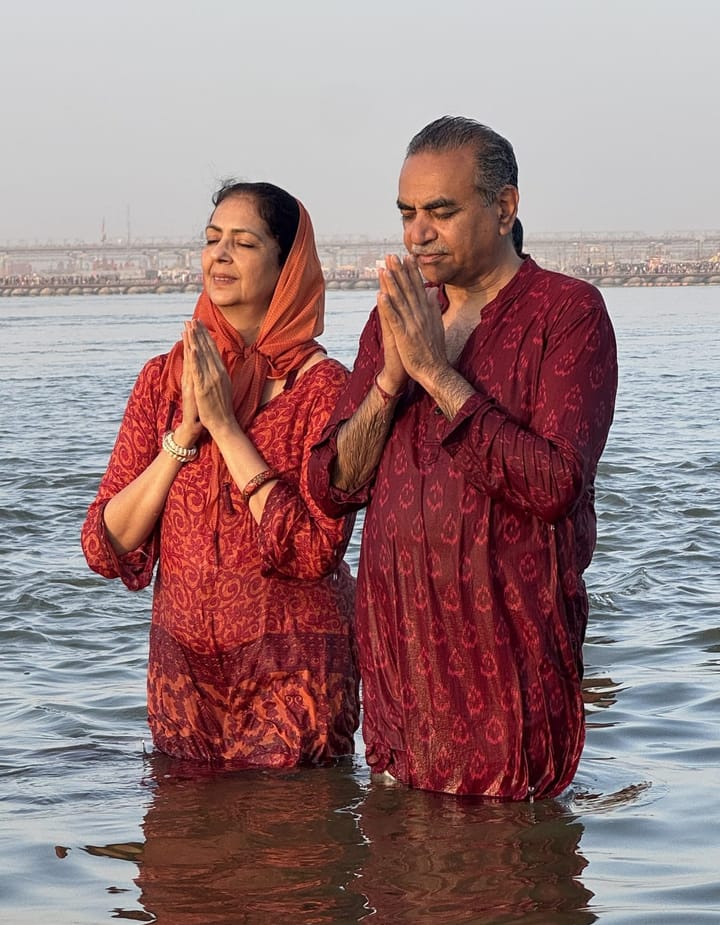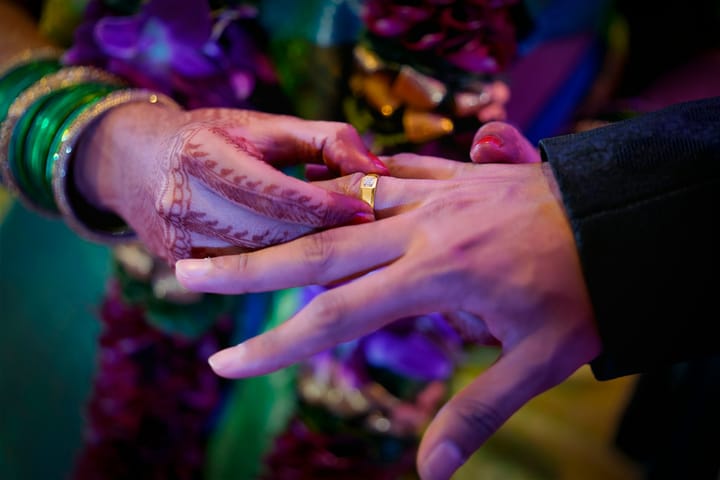Shubham Karoti Kalyanam
This year shall be the Sri Vishwavasu Nama Samvatsara. It is the 39th year in the 60 year cycle of Samvatsaras (years). ‘Viswavasu’ indicates that it shall be a year of beneficence, peace and good fortune.

Spring is in the air. The plant kingdom celebrates spring with vim and vigour. New leaves, flowers and baby fruits, sprout. Trees, shrubs, creepers, climbers … all are dressed at their best. Nature is truly the personification of the invisible God. Come Spring, and nature presents omens for new beginnings, prosperity and unending hope.
The ancient Indians celebrated the New Year in the spring season, as the Vikram Samvat. The famous King Vikramaditya was coronated on the first day of the Vedic Lunar calendar. The Vikram Samvat or the Hindu calendar is named after him.
The Gregorian calendar was adopted on 22 March, 1957, for official purposes. As per the Vedic Lunar calendar, the Vikram Samvat 2082, shall start on 30th March, 2025. This year shall be the Sri Vishwavasu Nama Samvatsara. It is the 39th year in the 60 year cycle of Samvatsaras (years). ‘Viswavasu’ indicates that it shall be a year of beneficence, peace and good fortune.
The first day of the Vikram Samvat, marks the first day of Chaitra Navratri. Lord Brahma started creating the universe on the first day of Chaitra Navratri. The first crop cultivated, was Jau (barley). We sow Jau and grow Khetri in our homes, during Navratri, in reverence of this crop and offer it back to Mother Nature. The fully mature, green Khetri, is symbolic of abundance. It is considered to be the harbinger of goodness and prosperity. It is offered to the Devi and then to young girls during Kanya poojan on Ashtami or Naumi day. The rest of the barley when put into flowing water, helps cleanse it.
Worship of God in any form, is done with the sole purpose of establishing a connect with God. In Nav-ratri (festival of nine nights), we worship the feminine aspect of Divinity. The nine forms of the Devi are Shailaputri, Brahmacharini, Chandraghanta, Kushmanda, Skandamata, Katyayani, Kalratri, Mahagauri, and Siddhidatri. The nine nights of darkness, can be thought of as the darkness of ignorance. Man is plagued by the vices embedded in his own inner consciousness. These are Kama (Lust), Krodha (anger), Lobha (greed), Moha (attachment), Madha (pride) and Matsarya (Malice). These vices, reduce man to a demon. These demonic tendencies have to be overpowered and annihilated by the supreme alchemy of the divine urge. This is the true purpose of Navratri pooja.
As per the legend, the female aspect of Divinity manifested as Durga. Goddess Durga fought the demon Mahishasura for nine nights before she finally annihilated him. Goddess Durga was an embodiment of the Satwic (Goddess Saraswati), Rajasic (Goddess Lakshmi), and Tamasic (Goddess Maha Kali). She overcame the forces of vice, wickedness etc. during the nine nights of struggle. Navratri basically celebrates the victory of good over evil.
We can think of it this way; Maa Lakshmi bestows wealth. This wealth could be financial, intellectual, intuitive powers, wealth of good character. Maa Saraswati being the Goddess of learning, empowers us to inquire, think, discriminate, convince, understand, orate, sing, compose etc. Maa Mahakali showers us with physical, mental and spiritual energy.
Chaitra Navratri happens when nature is at its best. So it is also an occasion to revere and offer gratitude to nature (Prakriti) in all its forms. Resources like land, water, air, minerals should not be misused but revered. Navratri is a time to propitiate the inner and outer divinity.
The purpose of observing the Navratri fasts and prayers, is to spend these days in purification of the body (by fasting) and the mind (by contemplation on the Devi) to cleanse all the impurities within. One could read the Durga Saptshati, Gauri Poojan, Durga chalisa etc.
Navratri culminates in Asthmi or Navami, when we do kanya poojan. We offer halwa and poori to the Mother Goddess and distribute it amongst prepubescent girls and adulate them as little goddesses. We give them dakshina along with bindis, bangles or hair-clips etc. This too is a subtle reminder to respect and value the girl child. Deep seated knowledge would have led to this custom being adopted by the society. While doing Devi-Poojan and Kanya-Poojan, we must remember to extend the respect to all the living goddesses around us … our mother, mother-in-law, wife, sister, daughter, daughter-in-law and all other women around us.
The ninth day of the Chaitra Navratri is Ram Navami. This marks the birthday as well as the coronation of Bhagwan Rama as the King of Ayodhya.
How to celebrate the Navaratri festival? Sri Sathya Sai Baba guides us beautifully, “Convert your will power (Iccha shakti) into a yearning for God. Convert purposeful action (kriya shakti) into a force for doing Divine actions. Convert your power of discernment (jnana shakti) into the Divine Itself.” This verily means, tune your mind, body and soul into thinking, doing and seeking divinity!
For those not spiritually inclined; let Navaratri be a time to revere nature and offer thanksgiving for all that nature has bestowed upon us. If we want the generations to come, to enjoy nature, we have to conserve the environment.
On a physical front; Navratri is placed at the time of the change of season from winter to summer or from summer to winter. This is the time when the body needs to detox to prepare for the next season. Eating fruits, potatoes, lauki, kaddu, Kuttu ka atta, Swank ke chawal, amaranth, singhare ka atta etc. detoxify the body.
Basically when the focus all day is on prayers, one eats less. The food being cooked in sehenda namak, is great for detox. The key is that a fast is a fast, and we should not convert it into a feast. Navratri, it’s a great time to rest and rejuvenate the digestive system.
Navratri offers options for all. It depends on what you’re looking for. Navratri could be a time for prayer, fasting, feasting, losing weight, pilgrimages, Jagran etc. Each of us has to find their calling. At the onset of the Navratri festival, we should pray for Shubham Karoti Kalyanam - May it bring auspiciousness and well-being for all!
This piece has been published in the Daily Guardian on 29.03.2025. It can be viewed here TDG_2903_Del_08-NEW.pdf




Comments ()